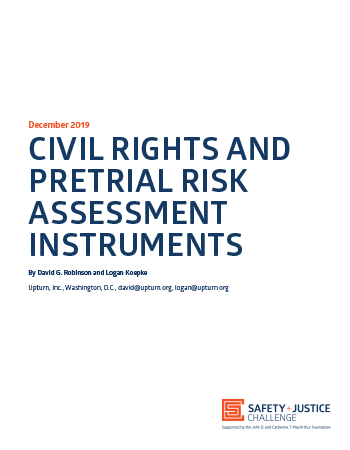Courts Presumption of Innocence Prosecutors September 10, 2020
Due process has given way to mere process when it comes to criminal justice in the United States. From June 2017 to June 2018, nearly 90 percent of all people charged in federal cases were convicted and sentenced without a trial. National data on state courts, where the majority of criminal cases are filed, reflects the rarity of trials. These statistics are evidence of the criminal legal system’s reliance on often private negotiations, known as plea bargains, which produce guilty pleas and eliminate the need for a trial. Retired U.S. Supreme Court Justice Anthony Kennedy has framed this as the American “system of pleas.” Despite the central role plea bargaining plays in the criminal legal system, the systemic factors surrounding the practice remain obscure. However, a critical examination of the values that drive the system of pleas can provide important insights for those seeking to transform how government institutions respond to harm.
Guilty pleas have become a linchpin of the U.S. criminal legal system. They enable overworked attorneys to chip away more quickly at constantly burgeoning caseloads and enable courts to more easily meet time standards for clearing cases by speeding up dispositions. They may even enable people accused of crimes, many of whom are forced to await the resolution of their cases from jail cells because they cannot afford small bail amounts, to return home more quickly. Plea bargaining is one of the many routines that have become essential to current criminal legal practice. But just because it’s prevalent doesn’t mean it’s positive.
A new report released by the Vera Institute of Justice with support from the Safety and Justice Challenge reviews the complex and inconclusive body of research surrounding plea bargaining. But the private nature of plea bargaining—and the dearth of studies focused on the people who are most impacted by its outcomes—make it difficult to truly understand this cornerstone of the American legal system.
What we do know is that the current system of pleas creates faster dispositions—at times to the detriment of individualized justice. Attorneys and judges make decisions with little contextual information about the person accused or the underlying circumstances of what occurred, partially because plea bargains reduce the need for the more transparent examination of facts that may happen with a trial. And for misdemeanors and other lower level offenses that make up the majority of charges filed, there is frequently little “bargaining” at all. Instead, there are standard “deals” intended to resolve cases—sometimes as early as a person’s first court appearance. What often results are speedy determinations that have less to do with the complex needs of the people involved and are more associated with local caseloads and crime rates, a person’s previous contact with the legal system, and the initial charging decision. Additionally, coercive factors, including being incarcerated pretrial and the fear of a harsher sentence should one lose at trial, can drive a person to plead guilty. Specifically, pretrial incarceration, which is rife with racial, economic, and gender inequities, increases a person’s likelihood of pleading guilty by 46 percent. As a result, pretrial incarceration and the system of pleas simultaneously contribute to the increased marginalization of already marginalized people by making them more likely to add convictions to a criminal record.
The lack of transparency in the process further diminishes the legitimacy of the criminal legal system. Before offering a plea deal, prosecutors can and, at times, do consult those who have been harmed. However, what the prosecution ultimately decides after these private negotiations is almost completely up to them. Without transparency and accountability, people are more likely to feel disconnected from the processes they are told to rely on for justice and safety. It should come as little surprise then that surveys of crime survivors indicate significant dissatisfaction with the current criminal legal process and the remedies it may offer.
The predominance of guilty pleas provides an important lesson as practitioners and advocates continue to think about creating new systems for justice and improving the current one. Any strategy that maximizes the public good while minimizing the resources required to do so will be attractive. But when it comes to justice, the “public good” cannot be simply reduced to the number of cases resolved. A system that obtains a high number of convictions but does not promote healing should not be considered efficient.
Instead, we need notions of efficiency that reflect our values. This requires being explicit about the principles driving decision making while constantly checking for alignment between those principles and the routines that emerge in implementation. For those concerned with promoting safety, healing, and accountability, this does not mean counting the number of people who are processed through a system. It means measuring how effective the processes, practices, and institutions that constitute a system are at empowering communities, both to prevent harm and to facilitate healing when harm occurs. Under this framework, plea bargaining may prove to be much more costly than its ubiquity suggests.








